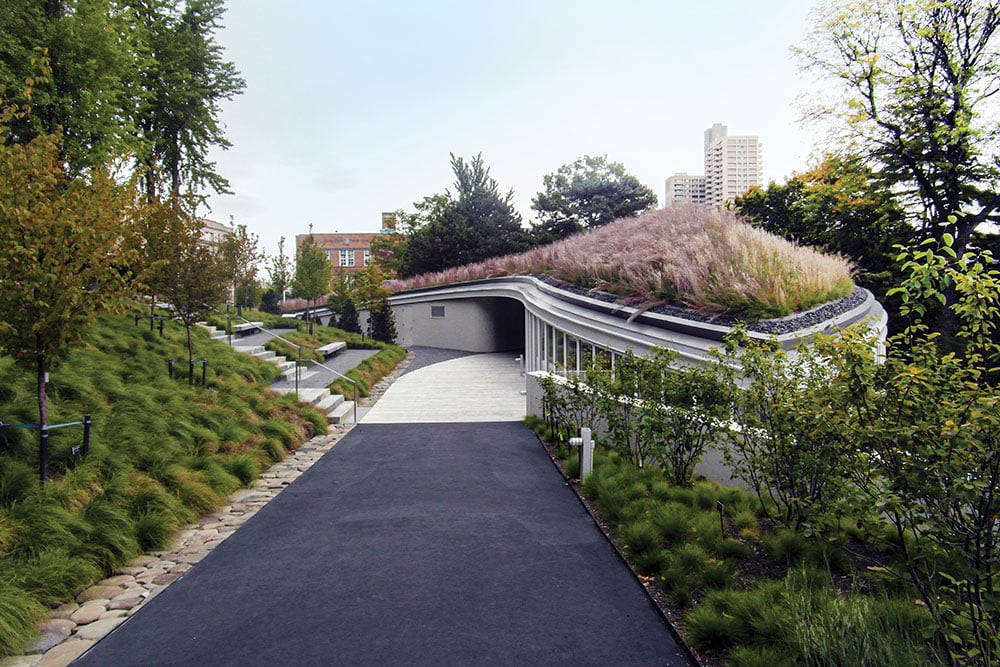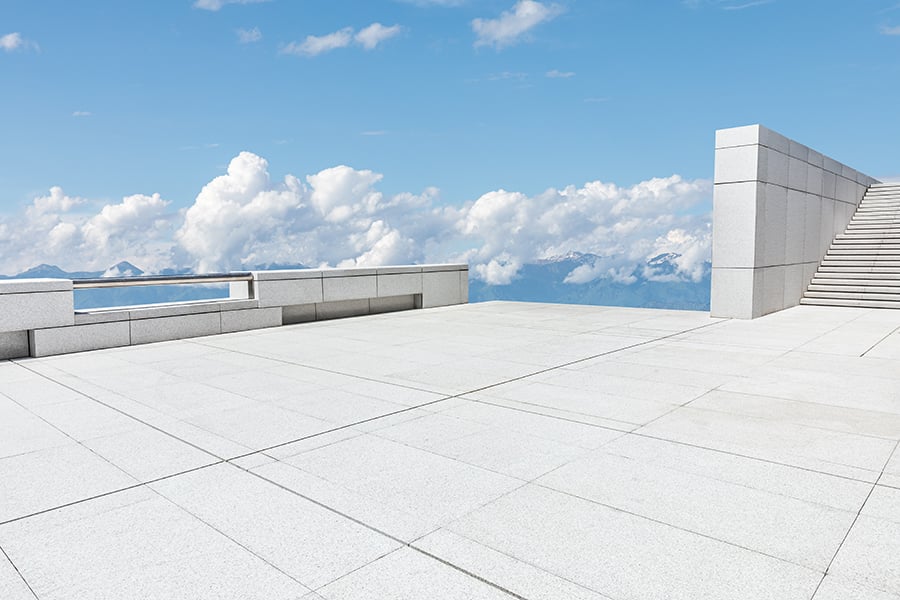Heavy rains and snowfall can be highly problematic. They make the roads unsafe for cars and pedestrians and can lead to potentially fatal accidents. It also means people will be moving slower as they try to navigate the weather safely. To make matters worse, there is the aftermath of the snow and rain: heavy rains and melting snow result in large amounts of stormwater runoff–which can lead to flooding if there are not suitable measures in place.
What is Storm Water and Storm Water Drainage?
Rainwater runoff, melting snow, and melting ice are all forms that stormwater runoff can take. In small amounts, this stormwater gets soaked into the soil or remains on the ground or rooftops until it evaporates. Sometimes though, stormwater can reach flood-like proportions. When that happens, water won’t be able to evaporate or absorb into the soil, which means it needs somewhere to go. Otherwise, it can cause serious damage, like soil and asphalt erosion, foundation damage, and more.
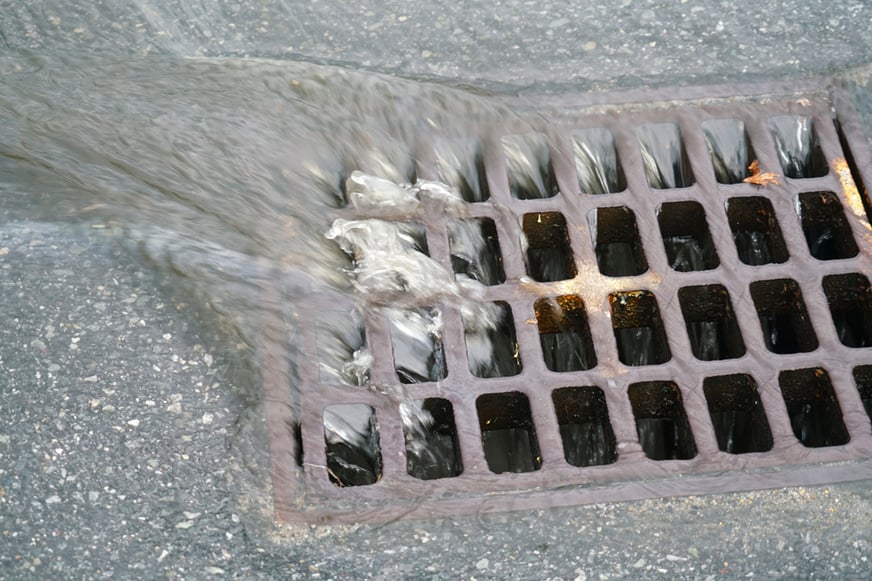
This is when/where a storm water drain becomes essential. Storm drains help to remove and redirect stormwater from the ground safely and efficiently, to prevent any damage from occurring. There are many options for storm water drains, including:
1. Open Storm Drains
An open storm drain is a type of drain that typically runs parallel to a road or a property’s edge. It is a long, uncovered drainage channel that carries stormwater into the local sewer system for treatment and management. Open storm drains can effectively collect stormwater, but they have a few disadvantages.
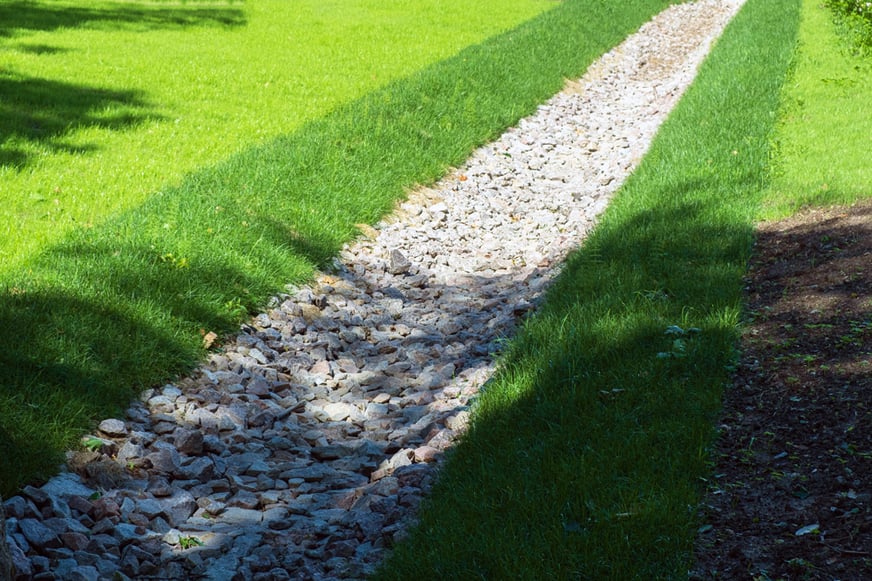
First, open storm drains aren’t cheap; they can be expensive to set up and maintain. They also aren’t very attractive, making them a wrong choice for anyone concerned with appearances, and they can smell bad. Safety is another consideration–if you choose to go with an open storm drain, you need to have it surrounded by a fence to prevent people or animals from falling into the channel.
2. French Drains
To prevent stormwater from pooling around your home’s foundation, you can turn to a French drain. These systems consist of a small drain grate or catch basin near the foundation of the home or building. The grate directs the water into a connected pipe in the ground, which guides the water to the street or a retention basin.
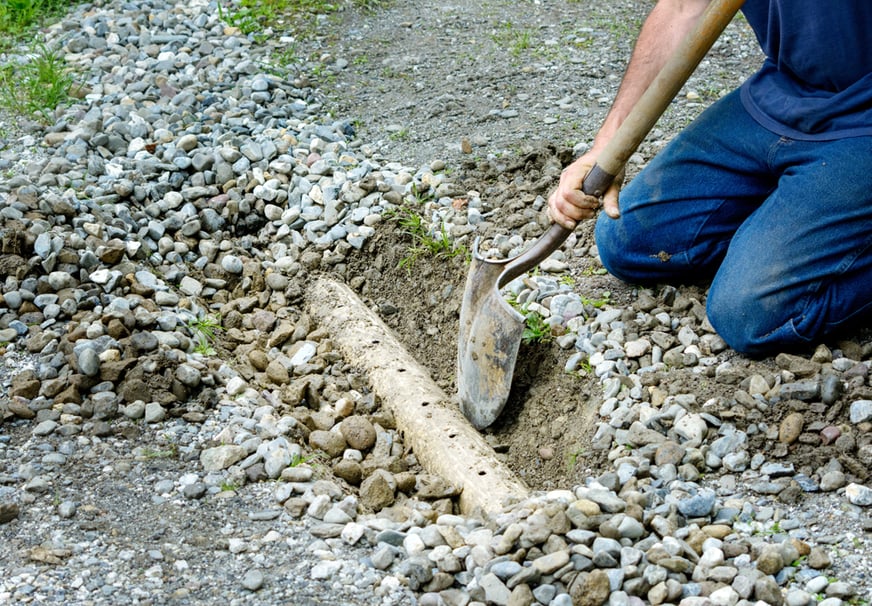
It is a real option for a stormwater drain in backyard areas, mainly because you can cover the pipe with decorative gravel or grass. Many brands also give you options for grate covers with decorative designs to help tie everything together seamlessly.
3. Permeable Pavement
For a unique and subtle stormwater drain design, consider permeable pavers in place of ordinary asphalt or concrete. These pavers feature a 100% permeable design, making them capable of draining water away from the ground's surface after even heavy rainfall. They work by filtering water through the gravel trapped in the pavers, that allows the water to drain slowly into the ground.
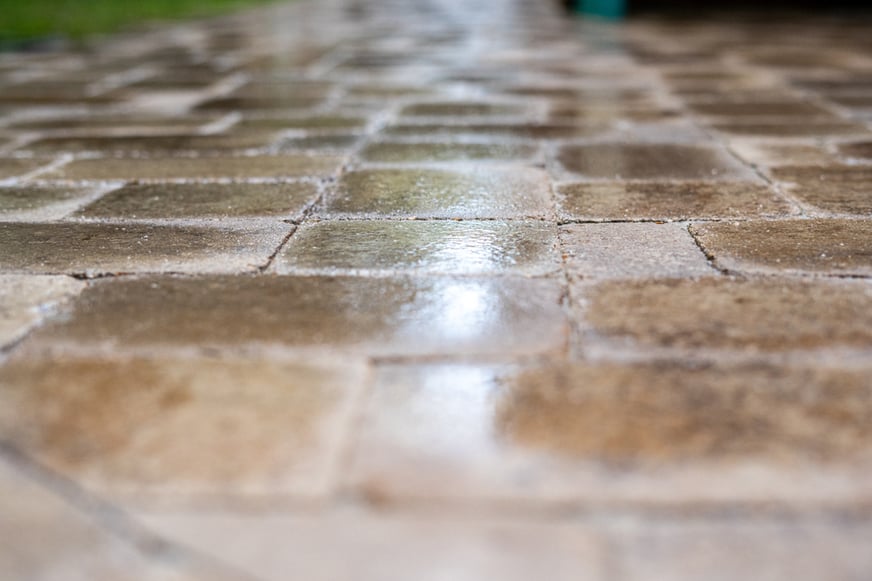
4. Trench Drains
One of the most traditional forms of storm water drain design is the trench drain. A trench drain consists of a long, wide drain channel covered by a grate cover. The trench drain from Landscape Drains features a durable stainless steel body that can handle large amounts of water runoff. Landscape Drains offers decorative grates, which allow you to customize the system's appearance to fit your landscape design better.
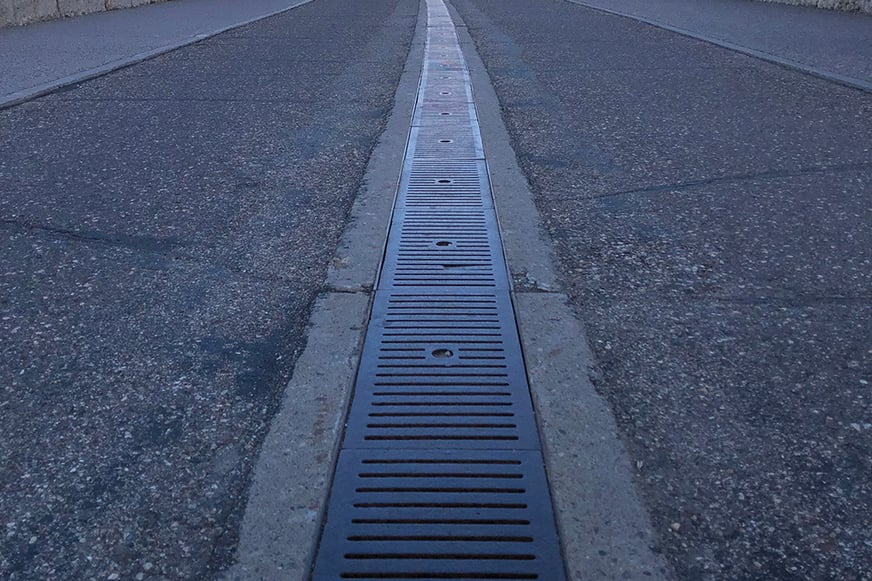
The system is also compatible with a catch basin and strainer basket, which allow you to catch objects and larger debris that makes it past the grates.
5. Slot Drains
A slot drain is a newer take on the traditional trench drain system. These systems, like the one from Landscape Drains, consist of a thin, linear drain channel that goes along the length of the area. Unlike the trench drain, the Slot Drain does not require a grate cover, which allows it to blend seamlessly with the surrounding ground or pavers.
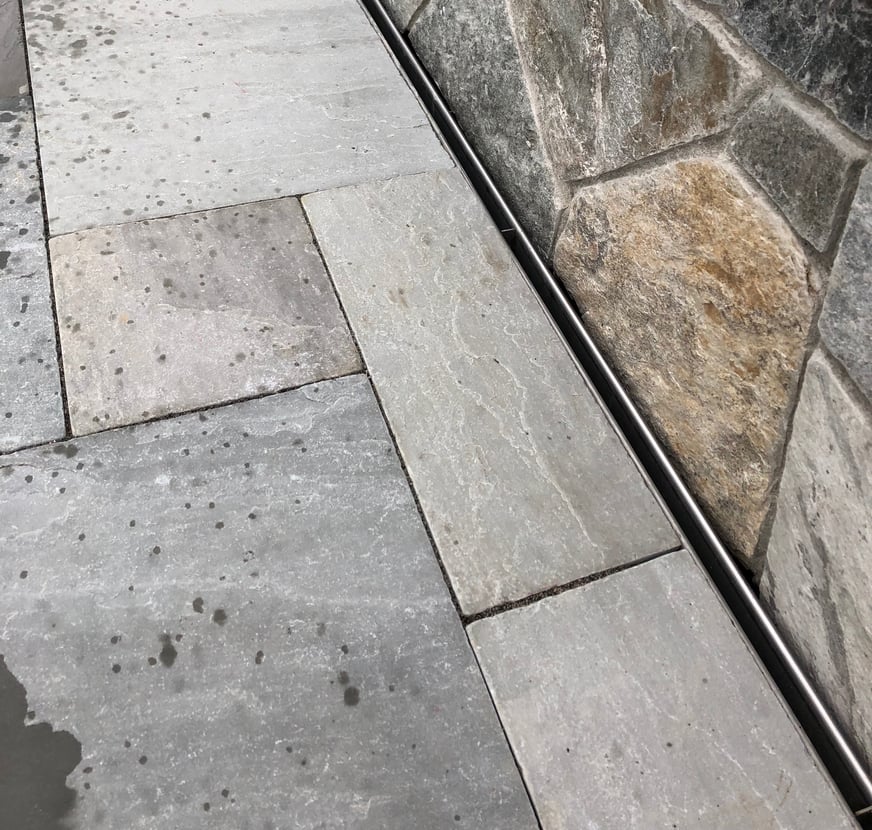
Landscape Drains offers different models, with three main size options: 1/2”, 1”, and 1.24” wide, with flow rates of 11, 18, and 27 GPM per foot of drain, respectively. The 1/2” and 1” models are ADA compliant making them a safe storm water drain option.
Like with the trench drain, the slot drain from Landscape Drains is compatible with the catch basin and strainer basket, to ensure that no debris clogs the system.
Want to Keep Your Storm Water for Landscaping? Try These Methods
Cistern
A cistern is a large water storage container for use either for inside, outside, or both. They are like wells, except they have to be filled with water. Cisterns are ancient technology and some can hold hundreds or thousands of gallons of water at a single time, while most modern residential cisterns are much smaller. Many modern cisterns are configured to catch rain water then store and use the water for gardening and/or landscaping needs. Depending on the codes in your area, you can also choose to have it plumbed for indoor use to flush toilets and wash clothes.
Rain Barrel
Rain barrels are another rainwater collection device that connects to your downspout. These barrels come in various shapes and sizes but typically hold no more than 50 gallons of water. If you live in an area where you get a lot of rain, rain barrels can benefit from the addition of another type of water management system.
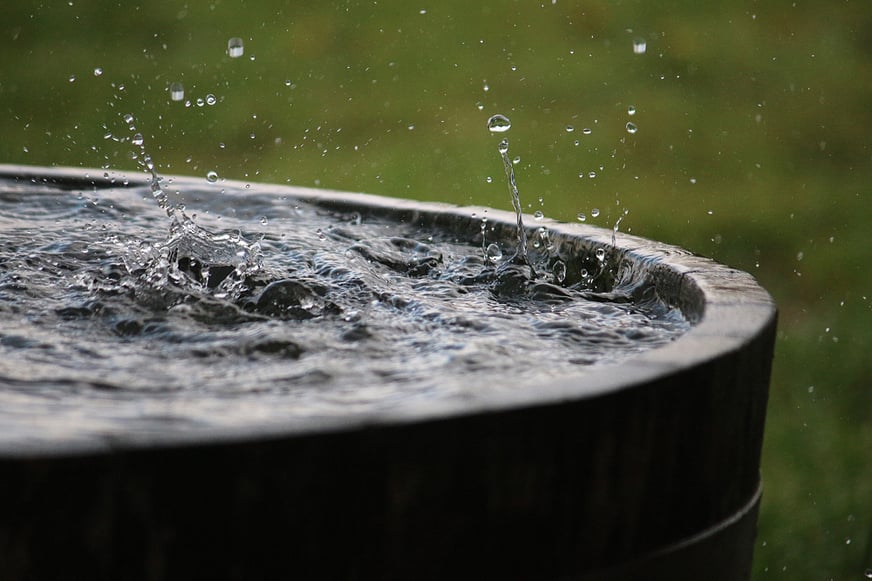
Want to Keep Your Storm Water for Landscaping? Try These Methods
Storm water runoff can cause catastrophic damage to your property. While you can’t prevent water runoff from getting onto your property, you can take measures to divert the water. The easiest way to do that is by installing an appropriate storm water drain in backyard spaces. Options like rain barrels and cisterns allow you to collect rainwater for you to use on your lawn, to cut down on your water usage and save you money.
Modern and properly installed drain systems help manage large amounts of water runoff with ease, to significantly minimize the potential for damage. Contact the professionals at Landscape Drains today to learn more.

